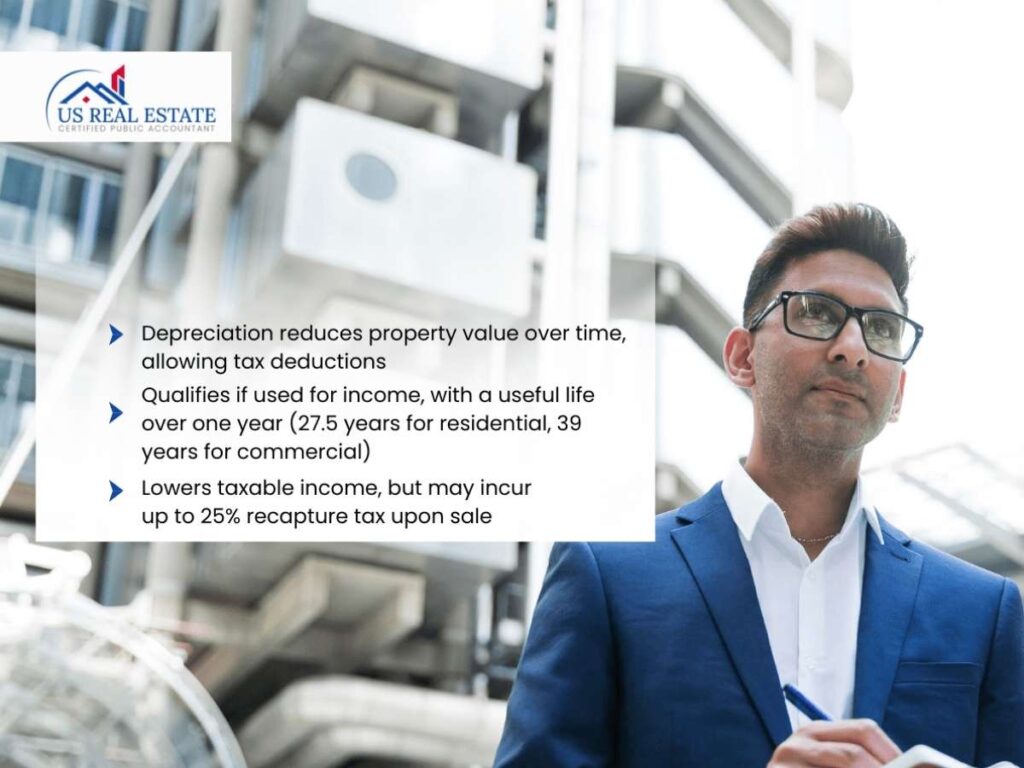
What Is Rental Property Depreciation and How Does It Work?
Rental property depreciation is an important yet confusing topic for landlords and real estate investors. Understanding the concept can help you minimize taxes and shape your investment strategy.
In this article, we’ll explore what rental property depreciation means, how it works and what it means for property owners in the United States.
Understanding Rental Property Depreciation
Depreciation is an accounting method that spreads out the cost of a tangible asset over its useful life. In real estate, it is the reduction in a property’s value over time due to factors like wear and tear, aging or obsolescence. For tax purposes, the Internal Revenue Service (IRS) allows property owners to deduct that depreciation from their taxable income, which helps lower their overall tax bill.

Key Components of Rental Property Depreciation
Not all properties qualify for depreciation. To qualify, a property must:
- Be used for business or income-generating purposes
- Have a determinable useful life longer than one year
- Not be land, as land does not depreciate
The IRS assigns a standard useful life for different types of properties, for example:
- Residential rental property – 27.5 years
- Commercial property – 39 years
How Does Depreciation Work?
1. Basis Calculation
The basis is the amount you invest in the property, which are usually:
- The purchase price
- Closing costs (excluding financing fees)
- The cost of improvements (but not repairs)
For example, if you buy a rental property for $300,000 and incur $20,000 in closing costs and $30,000 in improvements, your basis would be $350,000.
2. Calculating Depreciation
Once you establish the basis, you can calculate the annual depreciation deduction. For residential properties, it is calculated as:
Annual Depreciation = Basis/27.5
Using our previous example, the annual depreciation deduction would be:
Annual Depreciation = 350,000/27.5 ≈ 12,727.27
This means you can deduct roughly $12,727 from your taxable income a year.
3. Depreciation Methods
The IRS allows two main methods for calculating depreciation:
- Straight-Line Method – This is the most common method, where the same amount is deducted each year.
- Accelerated Depreciation – This allows for larger deductions in the earlier years of the property’s life. However, the straight-line method is often preferred for its simplicity and predictability.
What Are the Tax Implications of Depreciation?
1. Tax Deductions
Depreciation can help lower your taxable income, which means you pay less in taxes. For example, if you earn $50,000 from rent and have $25,000 in deductible expenses (including depreciation), your taxable income would be just $25,000.
2. Recapture Tax
However, when you sell the property, you might have to pay a recapture tax. This applies to the total depreciation you claimed while you owned the property and can be as high as 25%. So although depreciation can save you money on taxes now, it could result a bigger tax bill when you sell.
Conclusion
Rental property depreciation is a powerful tool for investors, helping them lower taxable income and increase cash flow. By understanding depreciation and keeping up with current tax laws, landlords can make smarter decisions that boost their profits.
If you’re thinking about investing in rental properties, it’s a good idea to consult a tax professional or accountant who knows the real estate market. They can help you optimise your tax strategy and understand the complexities of depreciation.



